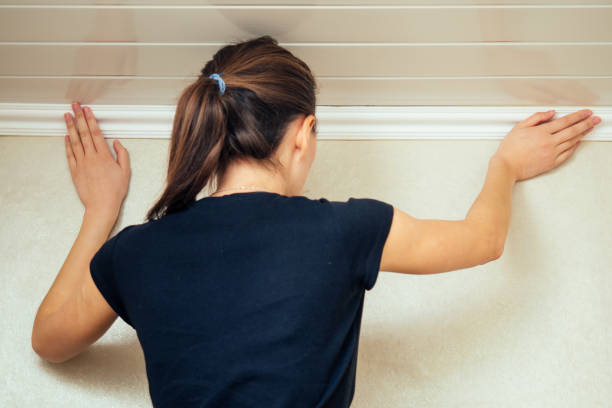Introduction
Small architectural details often make the biggest difference in how a home looks and performs over time. One such detail is exterior corner moulding, an element that combines both function and beauty. While it may appear simple, moulding at exterior corners enhances structural protection, weather resistance, and overall curb appeal.
Homeowners, builders, and designers alike value corner moulding for its ability to provide clean lines, conceal transitions, and protect vulnerable areas of a structure. Whether your home features traditional wood siding, vinyl cladding, or modern fiber cement panels, exterior corner moulding ties everything together seamlessly.
What Is Exterior Corner Moulding?
Exterior corner moulding refers to trim pieces specifically designed to finish and protect the outer corners of a building. These mouldings:
- Conceal rough siding edges.
- Prevent water infiltration.
- Add visual polish to architectural designs.
- Provide structural reinforcement at meeting points.
Essentially, they serve both practical and aesthetic roles, ensuring a property looks refined while staying protected against environmental damage.
Benefits of Exterior Corner Moulding
- Enhanced Durability: Protects corners from chips, cracks, and weather exposure.
- Moisture Protection: Seals gaps that could otherwise let water seep into walls.
- Improved Aesthetics: Provides clean, finished lines for a polished exterior.
- Easy Maintenance: Reduces the risk of damage and simplifies upkeep.
- Increased Property Value: Small details like moulding enhance overall curb appeal.
Popular Materials for Exterior Corner Moulding
Wood
Traditional and natural, wood moulding pairs beautifully with classic homes. However, it requires sealing, painting, or staining for protection.
PVC
Highly durable and low-maintenance, PVC moulding resists rot, moisture, and insects. It is a favorite among modern homeowners.
Fiber Cement
Strong and weather-resistant, fiber cement corner moulding offers excellent longevity, especially in harsh climates.
Vinyl
Affordable and versatile, vinyl corner moulding is lightweight, easy to install, and available in many colors.
Metal
Aluminum and steel mouldings are strong, sleek, and suitable for both residential and commercial buildings.
Styles of Exterior Corner Moulding
Traditional Trim
Simple and timeless, this moulding provides a clean look for most siding styles.
Wide Corner Boards
Larger boards create a bold architectural statement, drawing attention to exterior lines.
Beveled Moulding
With angled edges, beveled moulding softens corners and adds elegance.
Decorative Moulding
Ornamental details work well for Victorian, colonial, or craftsman-style homes.
Rustic Designs
Rough-hewn wood moulding complements log cabins and country-style homes.
Where to Use Exterior Corner Moulding
- Residential Homes: Enhances curb appeal and protects siding corners.
- Commercial Buildings: Provides durability and professional finish.
- Garages and Outbuildings: Ensures cohesive design across all structures.
- Porches and Decks: Blends transitions between exterior siding and trim.
- Restoration Projects: Maintains historical accuracy while offering modern protection.
Installation Process for Exterior Corner Moulding
Tools and Materials Needed
- Measuring tape
- Saw (miter or circular)
- Drill or nail gun
- Level
- Screws or nails
- Caulk and sealant
Step-by-Step Guide
- Measure the Corner: Ensure accurate sizing for a seamless fit.
- Cut Moulding Pieces: Precision cuts allow for tight joints.
- Attach Securely: Use nails or screws depending on the material.
- Seal Joints: Apply caulk to prevent moisture infiltration.
- Finish Surface: Paint or stain to match the home’s siding.
Maintenance Tips for Exterior Corner Moulding
- Inspect Regularly: Check for cracks, gaps, or peeling paint.
- Repaint or Restain: Refresh finishes every few years to extend lifespan.
- Clean Periodically: Remove dirt and mildew with mild soap and water.
- Repair Promptly: Address minor issues before they become costly problems.
Design Ideas with Exterior Corner Moulding
Bold Contrasts
White corner moulding on dark siding creates a striking effect.
Seamless Blends
Matching colors provide subtle transitions that highlight architectural flow.
Mixed Materials
Combine wood moulding with stone or brick exteriors for visual interest.
Historic Charm
Decorative corner moulding enhances period homes with authenticity.
Modern Minimalism
Sleek PVC or metal mouldings suit contemporary designs.
Comparing Exterior Corner Moulding with Alternatives
- Corner Flashing: Offers protection but lacks decorative appeal.
- Caulking Alone: Provides sealing but no structural reinforcement.
- Unfinished Edges: More affordable but prone to damage and deterioration.
Moulding stands out because it combines protection, reinforcement, and aesthetics in one solution.
Eco-Friendly Considerations
Sustainability matters in construction, and exterior corner moulding can support eco-friendly goals.
- Wood Options: Responsibly sourced cedar or pine supports renewable forestry.
- Recycled PVC and Vinyl: Reduce environmental impact while maintaining durability.
- Longevity: Durable moulding reduces the need for frequent replacements, lowering waste.
Cost of Exterior Corner Moulding
Prices vary by material, style, and size:
- Wood: $2–$5 per linear foot
- Vinyl: $3–$7 per linear foot
- PVC: $4–$8 per linear foot
- Fiber Cement: $6–$10 per linear foot
- Metal: $8–$15 per linear foot
While costs differ, long-term durability and reduced maintenance often justify higher initial investment.
Common Challenges and Solutions
- Warping or Cracking (Wood): Use treated wood and protective finishes.
- Fading (Vinyl or PVC): Choose UV-resistant materials.
- Installation Errors: Ensure proper measurements and alignment.
- Moisture Issues: Seal all joints to prevent water damage.
Modern Trends in Exterior Corner Moulding
- Color Matching: Homeowners now prefer moulding that blends seamlessly with siding.
- Bold Contrasts: Dark corner trim against light siding is gaining popularity.
- Minimalist Profiles: Streamlined designs suit contemporary architecture.
- Smart Materials: Self-cleaning and low-maintenance PVC options are emerging.
Tips for Choosing the Right Exterior Corner Moulding
- Match the material to your siding for consistency.
- Consider climate—PVC and fiber cement perform best in humid or rainy regions.
- Select a style that enhances your home’s architecture.
- Compare long-term costs, not just upfront prices.
- Decide whether to prioritize durability, appearance, or eco-friendliness.
Where to Buy Exterior Corner Moulding
- Home Improvement Stores: Ideal for standard sizes and materials.
- Online Retailers: Offer broader selections and customization options.
- Lumber Yards: Provide raw materials for DIY projects.
- Specialty Trim Suppliers: Best for high-end or decorative moulding.
Frequently Asked Questions
Q1: What is the purpose of exterior corner moulding?
It protects siding edges, prevents water damage, and adds a polished finish to exteriors.
Q2: Which material is best for exterior corner moulding?
PVC and fiber cement are highly durable, while wood provides timeless appeal.
Q3: Can I install corner moulding myself?
Yes, many homeowners complete DIY installations with basic tools and careful measurement.
Q4: How long does exterior corner moulding last?
Lifespan depends on material—PVC and fiber cement can last decades, while wood requires more upkeep.
Q5: Does corner moulding increase home value?
Yes, it enhances curb appeal and helps maintain structural integrity.
Q6: Can moulding be painted?
Wood, fiber cement, and PVC can be painted, while vinyl is often pre-colored.
Q7: Is exterior corner moulding eco-friendly?
Sustainably sourced wood and recycled PVC options reduce environmental impact.
Q8: How much does it cost to install corner moulding?
Installation typically adds $2–$6 per linear foot in labor costs, depending on complexity.
Q9: Do all homes need exterior corner moulding?
While not always required, it significantly improves both function and aesthetics.
Q10: How do I maintain corner moulding?
Routine cleaning, sealing, and repainting or staining as needed will extend its lifespan.

